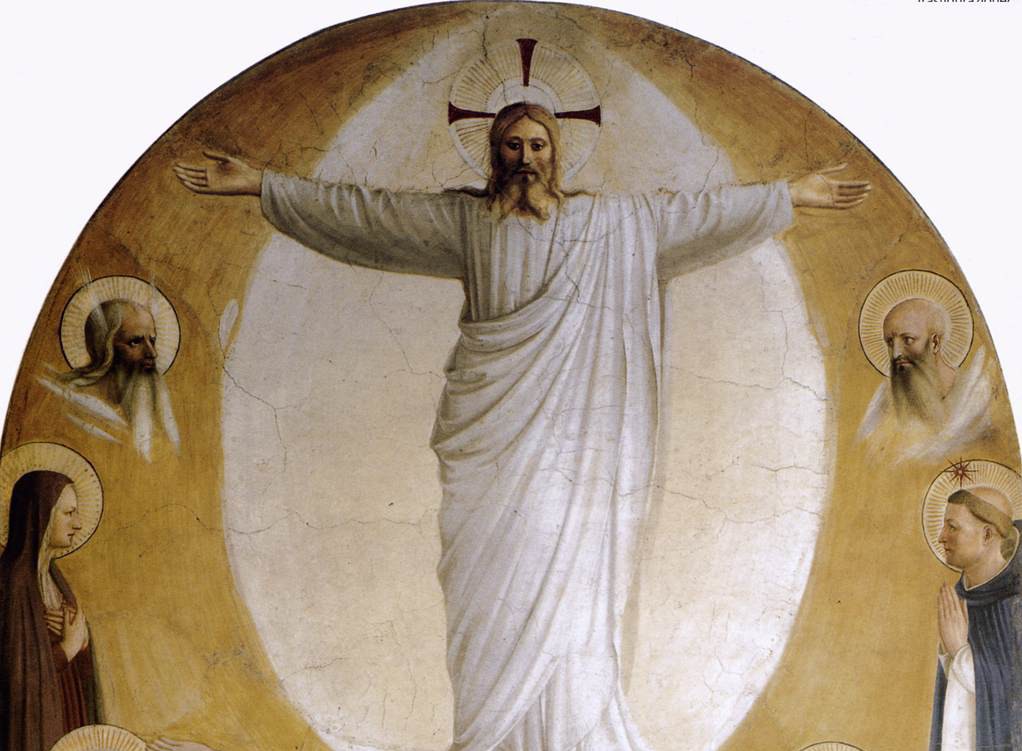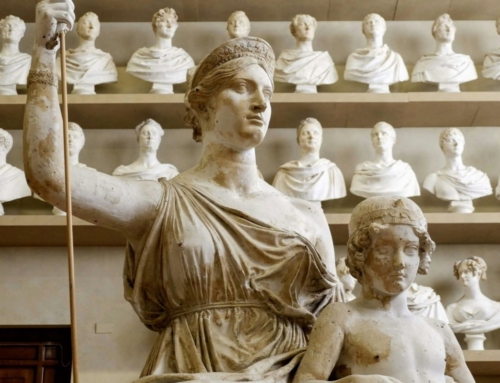While it is important to consider the mysteries of the life of the Lord as the Church’s calendar presents them to us, it is also helpful to contemplate them throughout the year. Ordinary Time can offer us an opportunity to see both how the events of Jesus’ earthly life formed part of a unified plan and how they continue to reveal the truth to us today. For instance, today let’s look again at the Transfiguration.
The Transfiguration of the Lord comes in a blaze of unearthly light. The glory of His divinity is no longer hidden, but for a brief moment the Lord allows His disciples to see Him as He truly is. In His perfect human nature, body and soul are so closely joined that virtue of soul overflows into radiance of flesh. Here is true humanity!
And yet, as the moment lingers, not all is light. An insight from François Mauriac’s Life of Jesus makes exactly this point. In his novelist’s imagination, Mauriac glances away from the mountaintop and sees that “the sun of his face obscured the heavens, and the snow of his garments wrapped the rest of the world in darkness.” In His very person, the Lord illuminates by, paradoxically, casting a shadow. His glory is particularly revealing by its sharp contrast with the darkness of the world He came to save. By the light of his blazing glory, we see our own sin and brokenness all too clearly. Then the moment fades, and we notice that the Lord’s feet never left the ground. Humanity is not yet lifted up to heaven’s glory. Happily, however, the Lord does not yet depart into His heavenly glory: He descends the mountain with His disciples.
Mauriac notes another shadow which lies over mankind: that of the Cross. The Lord chose to link His Transfiguration to His proclamation of the Cross—“the Son of Man must suffer greatly and be rejected by the elders, the chief priests, and the scribes, and be killed, and rise after three days”—for it is on the Cross that He is truly lifted up to glory. This is clearly a strange sort of glory. Again the sun is blotted out, but rather than being replaced by the light of the Glorified One, it leaves Him in darkness. He Who was worshipped by Elijah is now said to cry for his aid. And yet it is in this moment that Jesus is lifted up.
It is here on the Cross that these strands of light and darkness meet. In the midst of the darkness of death, the Lord stands in His great act of love. Our memory of His Transfiguration, of His glorious light, must assist our faith if we are to see His glory here. And indeed the Lord’s light, revealed once so majestically, does not remain hidden forever. The God of life tramples down the gates of death; the shadow of the Cross gives way to the light of Easter. The promise glimpsed on Tabor is fulfilled, and our fallen humanity is restored to its union with God. Now when the Lord ascends the mountain, He is lifted up and yet remains with His disciples.
Of course, we still see light and shadow embattled in the world and in us. We must once again sustain our faith by the light of His Transfiguration. Truly, He has already won the victory! He has promised that the night will be no more, that He Himself will be our light, forever driving away the darkness. And He has shown us the way to join in His glory: we must confront our darkness on the Cross. It is there, comforted by our Mother and strengthened by the Lord’s precious body and blood—another transfiguration—that the light of the Transfigured Lord will break into our lives.
✠
Image: Fra Angelico, Transfiguration







